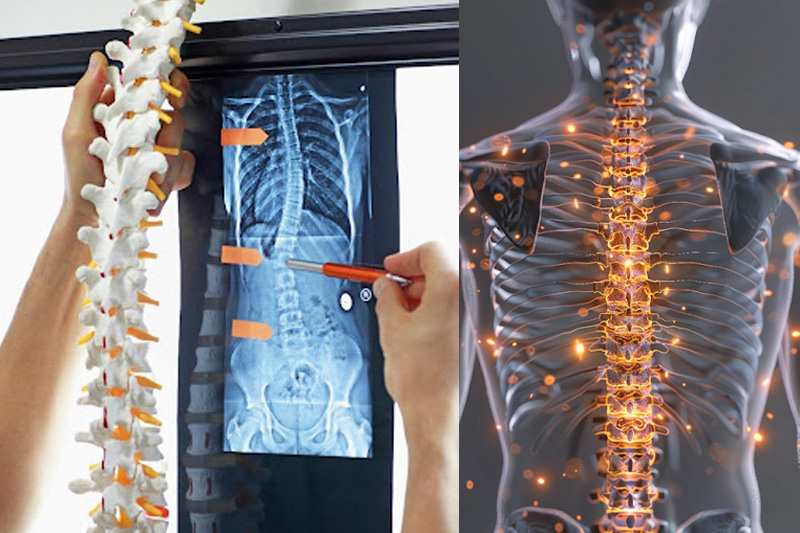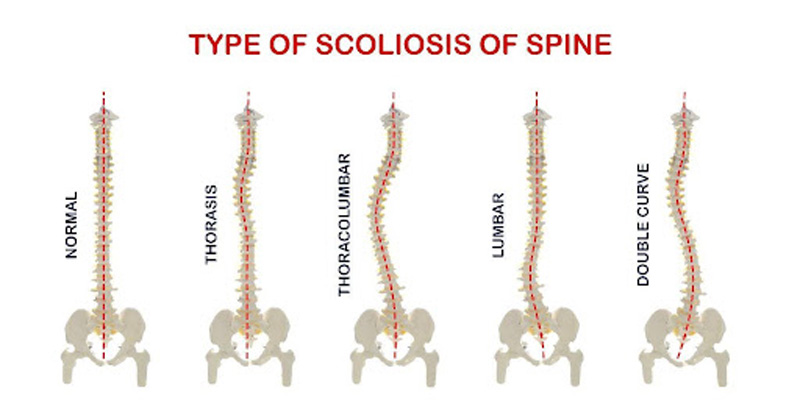CONDITIONS
Scoliosis
Overview
Scoliosis is a term used to describe the sideways curvature of the spine. When viewed from the back can be curved laterally in a “S” or “C” (single curve). It can occur at any age and tends to be seen in children and adolescents between ages 9-21. In Children it can progress really fast due to the puberty stage. On a normal spine, your spine is upright and strong and is able to function at its best). In a scoliotic spine, these curves would bring about stress and strains due to the rotational component as well as the side ways deviation of the spine often time shown up as joint jamming and blocking effects. This could lead to accelerated degeneration

Causes of lower back pain
Idiopathic scoliosis is scoliosis without a known cause. In as many as 80% of cases, doctors don’t find the exact reason for a curved spine.
Congenital scoliosis begins as a baby’s back develops before birth. Problems with the tiny bones in the back, called vertebrae, can cause the spine to curve. The vertebrae may be incomplete or fail to divide properly. Doctors may spot this rare condition when the child is born. Or they may not find it until the teen years.
Neuromuscular scoliosis is caused by a disorder like spina bifida, cerebral palsy, or a spinal cord injury. These conditions sometimes damage your muscles so they don’t support your spine correctly. That can cause your back to curve.
Degenerative scoliosis affects adults. It usually develops in the lower back as the disks and joints of the spine begin to wear out as you age.
Other causes:
Birth trauma, bad posture habits or poor ergonomics

Symptoms of Back Pain
- Visible curve in your back (observed on Adam’s test)
- One shoulder blade that is higher than the other
- One shoulder blade that sticks out more than the other
- Uneven hips
- A rotating spine with ribs that sticks out further on one side of your body
- Problems breathing because of reduced area in the chest for lungs to expand
- Back pain & stiffness
- Inflexibility
- Posture issues
- Pain and numbness in your arms or legs (from pinched nerves)
- Fatigue due to muscle strain

How can Chiropractic care help with back pain?
Chiropractic Treatment
A chiropractor can help to relieve the pain and discomfort of scoliosis.
Chiropractors manipulate the spine and provide alternative treatments. Realigning the spine will promote curve stability and Spinal mobility in a scoliosis. Chiropractic treatment can improve the quality of life for a person with scoliosis
However, be sure to visit a well trained and certified Chiropractor as receiving chiropractic treatment from a nonspecialist can make symptoms worse.
Specific Scoliosis Exercises
Various exercises may help with scoliosis, and experts propose a range of strategies. However, they all aim to realign the spine, rib cage, shoulders, and pelvis to achieve a typical posture. Specific scoliosis exercise should be prescribed based on the individual’s scoliotic curve as well as the fitness level of the patient
Posture orthotics
These are spinal blocks that can help patient improve their spinal curvature through a process of plastic deformation and over time. These are a great way to also incorporate the remaining exercises into your existing routines.

